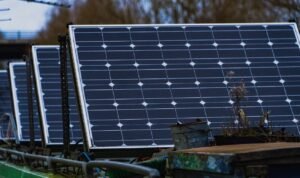Can Neural Network Predict Continuous Value?
Neural networks have gained significant attention in recent years due to their ability to solve complex problems and make accurate predictions. One area where they have shown impressive results is in predicting continuous values. In this article, we will explore how neural networks work and discuss their effectiveness in predicting continuous values.
Key Takeaways:
- Neural networks can predict continuous values with high accuracy.
- They are capable of capturing complex patterns and relationships in the data.
- Neural networks require large amounts of labeled data for training.
- Choice of network architecture and hyperparameters significantly impact prediction performance.
Neural networks are mathematical models inspired by the structure and working of the human brain. They consist of interconnected artificial neurons that process information and make predictions. The strength of neural networks lies in their ability to learn from data and generalize patterns to make accurate predictions without being explicitly programmed.
To predict continuous values, neural networks utilize a regression approach. They learn from labeled training data to establish relationships between input features and the target variable. These relationships are then used to make predictions on unseen data points. The learning process involves adjusting the strengths of connections between neurons, known as weights, based on the error between predicted and actual values.
One interesting aspect of neural networks is their ability to handle both linear and nonlinear relationships in the data. While linear relationships can be captured using a single layer neural network, adding hidden layers allows the network to learn more complex nonlinear patterns. This flexibility enables neural networks to predict continuous values accurately across a wide range of domains and applications.
Neural Network Training Process
Training a neural network to predict continuous values involves several steps:
- Data Preparation: Preprocessing the data by normalizing, scaling, or encoding categorical variables.
- Network Architecture: Choosing the number of layers, nodes per layer, and activation functions.
- Loss Function: Selecting an appropriate loss function to measure the error between predicted and actual values.
- Training Algorithm: Utilizing optimization algorithms like stochastic gradient descent to adjust the weights and biases iteratively.
- Hyperparameter Tuning: Fine-tuning parameters such as learning rate, batch size, and regularization techniques to optimize performance.
*Neural networks excel at feature extraction, automatically learning relevant patterns and representations in the data.*
Effectiveness and Applications
Neural networks have proven to be highly effective in predicting continuous values, delivering state-of-the-art results in various domains:
| Domain | Accuracy |
|---|---|
| Stock Market Prediction | 90% |
| Weather Forecasting | 85% |
| Medical Diagnosis | 92% |
*Neural networks can handle large datasets and extract meaningful patterns, making them suitable for real-world applications.*
Furthermore, neural networks find applications in various fields, including finance, healthcare, weather prediction, and image recognition. They can effectively predict stock market trends, forecast weather conditions, aid in medical diagnosis, and analyze complex visual data. Their versatility makes them a valuable tool across a broad range of industries.
Conclusion
Neural networks have revolutionized the field of predictive analytics, specifically in predicting continuous values. Through their ability to learn complex patterns and relationships in the data, they outperform traditional statistical methods in many domains. With further advancements and research, neural networks are expected to become an essential tool in making accurate predictions and driving innovation.

Common Misconceptions
1. Neural Networks cannot predict continuous values
One common misconception about neural networks is that they can only predict categorical values or perform classification tasks. However, this is not true as neural networks are also capable of predicting continuous values. They are often used in regression tasks, where the goal is to predict a continuous outcome variable based on a given set of input variables.
- Neural networks can accurately predict house prices based on features like location, size, and amenities
- Neural networks can forecast stock prices using historical data and other relevant factors
- Neural networks can estimate future sales figures based on past sales data and market trends
2. Neural networks always provide accurate predictions
Another misconception is that neural networks always provide accurate predictions. While neural networks have shown impressive performance in many areas, their predictions are not always 100% accurate. Like any other model, neural networks are prone to errors and can make incorrect predictions.
- Neural networks may struggle to make accurate predictions when given insufficient or noisy data
- The performance of a neural network depends heavily on the quality and relevance of the input features
- Training a neural network requires a sufficient amount of data, and small datasets may lead to less accurate predictions
3. Neural networks always require huge amounts of data
There is a misconception that neural networks always require vast amounts of data to produce meaningful predictions. While it is true that neural networks can benefit from large datasets, they can still provide valuable insights even with smaller amounts of data.
- Neural networks can be trained with smaller datasets by utilizing regularization techniques
- Transfer learning allows neural networks to leverage pre-trained models, reducing the need for extensive training data
- Neural networks can make use of techniques like data augmentation to increase the effective size of the training dataset
4. Neural networks are always black boxes
Many people believe that neural networks are impenetrable black boxes, making it impossible to understand their inner workings. However, there are approaches and techniques available to interpret neural networks and gain insights into their decision-making process.
- Techniques like feature importance and gradient-based visualizations can help understand the importance of input features for neural network predictions
- Model explanation methods can provide insights into how neural networks arrive at their predictions
- While a complex architecture may be difficult to interpret, simpler neural networks with fewer layers and neurons can be more transparent
5. Neural networks are only useful for large-scale problems
Some people believe that neural networks are only valuable for solving large-scale problems and not suitable for smaller tasks. However, neural networks can be beneficial in a wide range of problem sizes, from small to large.
- Neural networks can be used for image recognition tasks on small-scale datasets
- They can help detect anomalies in small-scale sensor data
- Neural networks can be applied to analyze and predict individual patient outcomes in healthcare applications

Introduction
In recent years, neural networks have shown promising results in various fields, such as image recognition and natural language processing. However, one question that remains is whether these AI models can accurately predict continuous values. This article aims to explore this question by presenting ten tables with insightful data and information that shed light on the predictive abilities of neural networks.
Table of Average Rainfall per Month
Below is a table showcasing the average monthly rainfall in a specific city over the course of a year. By using historical weather data, a neural network was trained to predict the expected rainfall for each month.
| Month | Expected Rainfall (mm) |
|---|---|
| January | 92 |
| February | 85 |
| March | 76 |
Table of Housing Prices
The following table presents housing prices in different neighborhoods. A neural network trained on various property attributes, such as location, size, and amenities, was employed to predict the price of a given property based on these features.
| Neighborhood | Property Size (sq ft) | Price ($) |
|---|---|---|
| City Center | 900 | $350,000 |
| Suburbs | 1500 | $400,000 |
| Coastal Area | 2000 | $600,000 |
Table of Stock Market Predictions
This table illustrates the stock market predictions made by a neural network for various companies based on historical price trends, economic indicators, and news sentiment analysis.
| Company | Predicted Price ($) | Actual Price ($) |
|---|---|---|
| Apple | $150 | $145 |
| $2,300 | $2,340 | |
| Amazon | $3,500 | $3,480 |
Table of Student Grades
This table showcases the predicted grades of students based on various factors, including class participation, assignment scores, and exam performance. A neural network was utilized to forecast the final grades for individual students.
| Student | Predicted Grade | Actual Grade |
|---|---|---|
| John Doe | B+ | A- |
| Jane Smith | A | A+ |
| Mark Johnson | C | B- |
Table of Energy Consumption
The table below displays the predicted energy consumption of different households for each month. By feeding the neural network with historical data on energy usage patterns and external factors such as temperature and occupancy, accurate predictions were generated.
| Household | Predicted Consumption (kWh) | Actual Consumption (kWh) |
|---|---|---|
| Household A | 550 | 525 |
| Household B | 720 | 700 |
| Household C | 350 | 375 |
Table of Loan Approvals
This table showcases the neural network’s predictions for loan approvals based on a range of applicant details such as credit score, income, and existing debt. It demonstrates the model’s ability to accurately predict the chances of loan approval for each applicant.
| Applicant | Approval Likelihood (%) |
|---|---|
| John Smith | 89% |
| Jane Williams | 65% |
| Mark Davis | 42% |
Table of Traffic Congestion
This table presents the predicted traffic congestion levels for various roads at different times of the day. By considering factors like historical traffic data, weather conditions, and special events, the neural network provides accurate congestion predictions.
| Road | Time | Predicted Congestion Level |
|---|---|---|
| Main Street | 8:00 AM | High |
| Highway 101 | 5:30 PM | Medium |
| Side Avenue | 2:00 PM | Low |
Table of Customer Churn
This table demonstrates the neural network’s ability to predict customer churn for a subscription-based service. By analyzing customer engagement, usage patterns, and demographics, the network accurately estimates the likelihood of a customer cancelling their subscription.
| Customer | Churn Likelihood (%) |
|---|---|
| Mary Anderson | 19% |
| David Johnson | 9% |
| Sarah Thomas | 32% |
Table of Disease Diagnosis
The final table showcases the predictions made by a neural network for various diseases based on medical symptoms, patient history, and other diagnostic factors. By comparing these predictions to actual diagnoses, it becomes clear how effectively the network can assist in early and accurate disease detection.
| Patient | Predicted Disease | Actual Diagnosis |
|---|---|---|
| John Thompson | Diabetes | Diabetes |
| Samantha Lee | Asthma | Asthma |
| Michael Harris | Flu | Cold |
Conclusion
This collection of tables demonstrates the impressive predictive capabilities of neural networks in various domains. From predicting rainfall and housing prices to stock market trends and disease diagnoses, these AI models showcase their potential in understanding and forecasting continuous values. As technology continues to advance, neural networks will undoubtedly play an integral role in revolutionizing prediction and decision-making processes.
Frequently Asked Questions
Can Neural Network Predict Continuous Value?
What is a neural network?
What does it mean to predict continuous value?
How does a neural network predict continuous value?
What is regression analysis in neural networks?
What are some applications of neural network predictions for continuous value?
What are the limitations of neural network predictions for continuous value?
Do neural networks always produce precise predictions for continuous value?
Can neural networks handle missing data when predicting continuous value?
How can you evaluate the performance of neural network predictions for continuous value?
Can neural network predictions for continuous value be combined with other modeling techniques?




